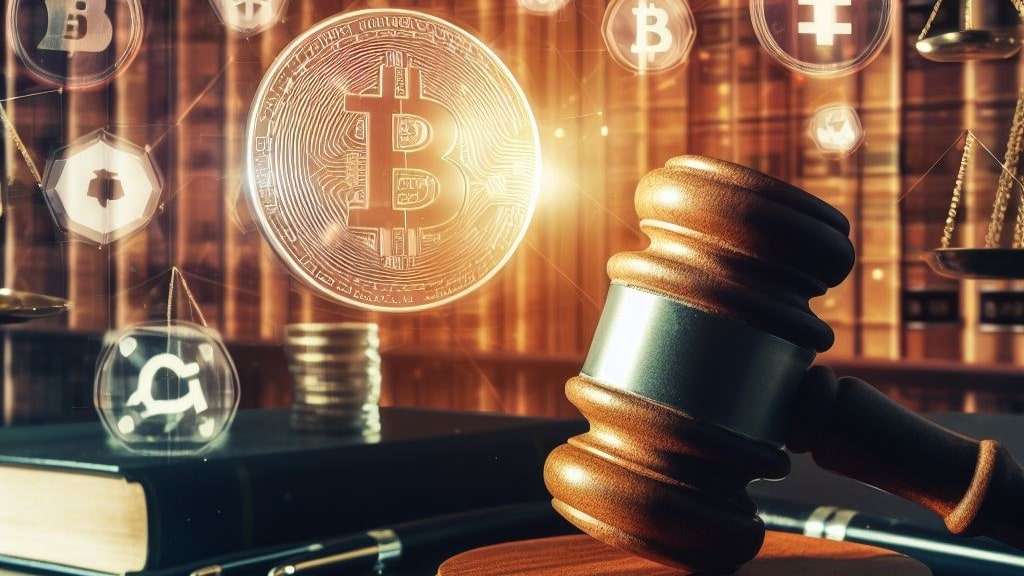
In a significant development within the cryptocurrency sphere, Circle, a prominent issuer of stablecoins, has thrown its hat into the legal ring between the Securities and Exchange Commission (SEC) and Binance, a major cryptocurrency exchange. At the heart of the matter is the classification of stablecoins and whether they should be subjected to the same stringent financial trading regulations as traditional securities.
The Crypto Clash: Binance vs. SEC
The ongoing legal battle between Binance and the SEC has captured the attention of the crypto community. Major players in the crypto exchange arena, including Binance and Coinbase, have been resisting the idea of subjecting cryptocurrencies to the existing strict financial laws of the United States. In response to these allegations, Circle has presented a compelling argument specifically related to stablecoins pegged to the U.S. dollar, such as BUSD and its own USDC.
Circle’s Argument: Why Stablecoins Are Not Securities
Circle asserts that stablecoins should not be categorized as securities primarily because users do not anticipate making a profit from standalone purchases of these stable digital assets. According to Circle’s filing, “Payment stablecoins, on their own, do not have the essential features of an investment contract.” Consequently, they argue that these stablecoins fall outside the jurisdiction of the SEC.
Furthermore, Circle reinforces its stance by referring to decades of established case law, emphasizing that the mere sale of an asset, disconnected from any post-sale commitments or responsibilities by the seller, does not suffice to establish an investment contract. This argument holds substantial importance in understanding why Circle firmly believes that stablecoins should not be considered securities.
Decades of Precedent: The Legal Foundation
Circle’s position gains additional strength from the extensive body of case law that supports the view that an asset sale, when devoid of any post-sale promises or obligations by the seller, should not be construed as an investment contract. This legal foundation forms the cornerstone of Circle’s argument against the classification of stablecoins as securities.
SEC’s Accusations Against Binance
The SEC has leveled multiple charges against Binance in June, primarily related to legal violations. These charges revolve around the facilitation of cryptocurrency trades, encompassing assets such as Binance Coin (BNB), Polygon (MATIC), Solana (SOL), Cardano (ADA), and Binance’s stablecoin BUSD. The SEC alleges that these activities involve the trading of unregistered securities.
Specifically, the U.S. Securities and Exchange Commission accuses Binance of marketing BUSD as an investment contract, citing its promotion through yield offerings and reward programs. In response, Binance, along with its U.S. subsidiary and owner Changpeng “CZ” Zhao, has filed a motion to dismiss the SEC case.
The Core of Binance’s Argument
Binance’s central argument revolves around the SEC’s purported attempt to exert control over digital assets without the proper authorization from Congress. This assertion adds a layer of complexity to the ongoing legal battle between Binance and the SEC.
The Ripple Effect of Circle’s Involvement
Circle’s recent entry into this legal dispute has injected a fresh perspective into the already contentious issue of stablecoin classification. As the battle rages on, the crypto community awaits further developments and legal proceedings that could reshape the regulatory landscape for digital assets.
The Broader Implications
Beyond the immediate legal skirmish between Binance and the SEC, the outcome of this case could set a precedent for the classification and regulation of stablecoins. If the court were to rule in favor of Circle’s argument, it could potentially pave the way for a more lenient regulatory environment for stablecoins in the United States, reducing the burden of compliance on stablecoin issuers.
The Future of Stablecoins
The future of stablecoins hangs in the balance as this legal battle unfolds. Should they be deemed non-securities, stablecoins like BUSD and USDC may continue to flourish, offering stability and efficiency in the world of digital finance. On the other hand, if the court upholds the SEC’s classification, stablecoin issuers may face heightened regulatory scrutiny, potentially altering the dynamics of the crypto market.
Conclusion
The clash between Binance, the SEC, and now Circle, has brought to the forefront a critical question in the world of cryptocurrencies: Are stablecoins to be treated as securities or not? The answer to this question could have far-reaching implications, not only for the parties involved but also for the broader crypto industry. As legal proceedings continue, the crypto world watches closely, knowing that the outcome could shape the future of stablecoins and digital asset regulation in the United States.

Get the latest Crypto & Blockchain News in your inbox.